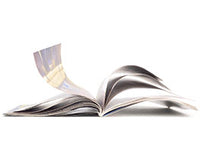Printing plays a vital role in various industries, from publishing and packaging to fashion and art. Selecting the right printing method can greatly impact the outcome of your project. Each printing technique has its own strengths and is suited for different applications. In this blog post, we’ll explore 7 well-known and commonly used printing methods, detailing how they differ and which might be best for your needs.
What is mean by printing techniques?
Printing techniques refer to the various methods used to reproduce text and images on different surfaces, such as paper, fabric, metal, or plastic. Each technique involves a unique process and is suited to specific types of projects and materials.
A Quick Overview of 7 Different Techniques and Their Best Uses
Here, we explore various printing techniques and their best uses.
1.Offset Printing
Definition and Process: Offset printing is a traditional method in which an inked image is transferred (or "offset") from a plate to a rubber blanket and then to the printing surface. This technique uses the CMYK (Cyan, Magenta, Yellow, Black) color model and is ideal for high-volume print runs.
Uses: Offset printing is perfect for producing high-quality and consistent results on large print runs. It is commonly used for printing books, magazines, newspapers, brochures, and stationery.
2.Digital Printing
Definition and Process: Digital printing involves directly transferring a digital image using high-speed inkjet or laser printers. It eliminates the need for printing plates, making it cost-effective for short runs.
Uses: This method offers quick turnaround times for low to medium-volume printing jobs. It's ideal for business cards, flyers, posters, and personalized marketing materials.
3.Screen Printing
Definition and Process: Screen printing, or silk screening, uses a mesh screen to transfer ink onto a material, except in areas made impermeable to the ink by a blocking stencil. It allows for vibrant colors and durable prints.
Uses: You will see screen printing widely used for textiles, such as t-shirts, bags, and other promotional items. It is also used for posters, stickers, and signage.
4.Flexography
Definition and Process: Flexography uses flexible relief plates to print on a variety of substrates, including plastic, metallic films, and paper. It is a high-speed process suitable for large print runs.
Uses: Printers commonly use flexographic printing for packaging, including food packaging, labels, tape, and gift wrap. This technique also works for printing on non-porous materials required for various industrial applications.
5.Gravure Printing
Definition and Process: Gravure printing involves engraving the image onto a cylinder, which is then used to transfer ink onto the material. This method is known for its high-quality image reproduction and consistency.
Uses: Printers typically use gravure printing for high-volume printing tasks such as magazines, catalogs, packaging, and wallpaper.
6.Letterpress Printing
Definition and Process: Letterpress printing is a relief technique in which a printed plate's raised surface is inked and pressed onto the paper. This traditional method offers a distinctive, tactile quality.
Uses: This technique is frequently applied to customize high-quality stationery, wedding invitations, and business cards. It's appreciated for its ability to produce crisp, clean lines and a luxurious feel.
7. 3D Printing (Additive Manufacturing)
3D printing is a revolutionary technique that builds objects layer by layer from a digital model. It uses materials like plastic, resin, or metal to create everything from prototypes to final products.
Key Features:
- Customizable Designs: Capable of producing highly detailed and intricate objects.
- Wide Range of Materials: From plastics to metals and even ceramics.
- Low Waste Production: Efficient use of materials with minimal excess.
Best Uses:
- Prototypes for engineering and product design
- Custom parts and tools for manufacturing
- Creative art projects and sculptures
Understanding the various printing techniques and their uses can significantly enhance the outcome of your print projects. Whether you need high-volume brochures, custom t-shirts, or elegant wedding invitations, contact us today. Let's discuss the perfect printing technique to bring your vision to life.
Conclusion
Choosing the right printing method depends on what you need, whether it’s a large batch of brochures or a custom-designed product. Understanding these seven methods will help you pick the best one for your project, ensuring you get the results you want.
Frequently Asked Questions (FAQ) About Printing Methods
1. What is the difference between offset printing and digital printing?
Offset Printing: Uses metal plates and a rubber blanket to transfer ink onto paper. It's ideal for high-volume jobs, offering high quality and cost-effectiveness for large runs.
Digital Printing: Prints directly from digital files to the substrate without needing plates. It’s best for quick, short-run projects and allows for easy customization.
2. What are the main advantages of screen printing?
Advantages of Screen Printing:
- Durability: Produces long-lasting, vibrant prints.
- Versatility: Can be used on various surfaces like fabric, glass, and metal.
- Cost-Effective for Simple Designs: Ideal for designs with few colors and solid areas.
3. When should I choose flexography over other printing methods?
Flexography is best for high-speed production and printing on a variety of materials, including non-porous surfaces like plastic and foil. It’s cost-efficient for large volumes, making it ideal for packaging and labels.
4. What makes gravure printing suitable for high-volume projects?
Gravure Printing involves engraving images onto cylinders, which allows for high-quality, detailed prints. It’s ideal for very high-volume jobs because the engraved cylinders are durable and can produce millions of impressions.
5. What is letterpress printing, and what are its benefits?
Letterpress Printing: Involves pressing inked plates or types onto paper, creating a tactile, embossed effect. It’s valued for its classic, elegant appearance and is perfect for luxury stationery, invitations, and fine art prints.
6. How does 3D printing differ from traditional 2D printing methods?
3D Printing builds objects layer by layer from a digital model, using materials like plastic or metal. Unlike traditional 2D printing, which creates flat images, 3D printing makes three-dimensional objects, suitable for prototypes, custom parts, and artistic creations.
7. Which printing method is best for small, personalized orders?
Digital Printing is ideal for small, personalized orders. It allows for quick turnaround times and customization without the need for large quantities or plates.
8. Can screen printing be used for detailed, multi-color designs?
Screen printing can handle detailed designs, but each color requires a separate screen, which can be labor-intensive and costly. It’s most efficient for designs with fewer colors.
9. What are the environmental impacts of different printing methods?
Offset and Flexo Printing generally use more ink and materials, which can have environmental impacts. Digital Printing tends to be more environmentally friendly due to less waste and fewer chemicals. 3D Printing also minimizes material waste by building objects layer by layer.
10. How do I choose the right printing method for my project?
Consider the following factors:
- Volume: High-volume jobs are best suited for offset or flexo printing.
- Turnaround Time: For quick jobs, digital or screen printing might be preferable.
- Material: Different methods work better with specific materials (e.g., flexo for flexible materials, screen printing for fabrics).
- Design Complexity: Simple designs are best for screen printing, while detailed or multi-color designs might be suited for offset or digital printing.
Also read this: 4 Hallmarks of a Great Advertising Message (Examples Included!)





